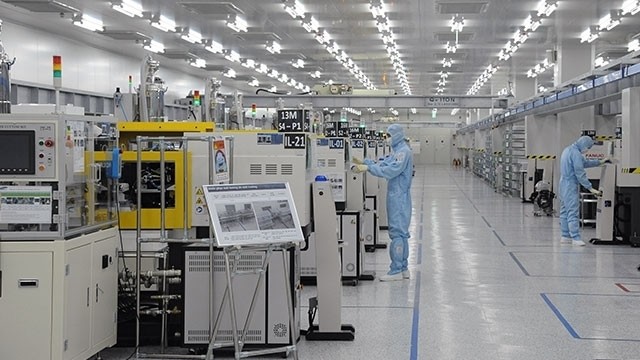In the first three months of 2017, when Samsung suspended some of its production, Vietnam’s economy was fairly subdued. One year later as Samsung’s production grew by more than 18%, Vietnam’s economy witnessed a remarkable recovery. Such a link has prompted Dr Nguyen Duc Thanh from the Vietnam Institute for Economic and Policy Research (VEPR) to question what the real driver of the Vietnamese economy is and what its future directions are.
He said that, although the number of newly established companies in the first quarter did increase, the number of jobs did not rise in proportion to the economic growth. Thanh raised the question: Is Vietnam’s strong growth driven by technology without the need for much human labour or by major foreign-invested enterprises with little changes in their workforce and whose production is completely dependent on global market developments?
Dr Thanh warned that all foreign-invested enterprises have certain production cycles and in the case that they relocate their production to another country, Vietnam’s economy will be deeply affected if its reliance on the foreign sector remains considerable.
According to economist Nguyen Anh Duong from the Central Institute of Economic Management (CIEM), the growth rate in the first quarter was impressive but the growth potential and quality have clearly seen little improvement for years.
In addition, the General Statistics Office stated that the robust growth in the first quarter of 2018 was built on the strong momentum from the end of last year, coupled with modest growth in the first quarter of 2017. The agency warned that growth will become sluggish towards the end of the year. Using this logic, growth is expected to slow in the first quarter of 2019 and recover at the end of year, with some luck. This clearly shows that the economy is encountering difficulties.
Some stated that the accelerating momentum in reform was also an important driver of the strong growth in the first quarter. But in reality, there is still much room for further reform. In other words, there remain a handful of problems that require improvement.
Since the Vietnamese economy is heavily dependent on trade, if global trade shrinks, it will immediately affect domestic growth. A CIEM estimate shows that a one percentage point increase in global trade growth will add 4 percentage points to Vietnam’s trade growth and vice versa.
Another concern voiced by many economists is the rising collection of domestic taxes in order to offset the revenue shortfall as a result of free trade agreements. According to Duong, instead of taking actions to improve the effectiveness of tax collection, prevent tax frauds, and reduce recurrent spending, which accounted for more than 76% of the total spending in the first quarter, the Ministry of Finance has been more engaged with tax increase proposals, such as the environmental protection tax levied on fuel products. This approach is feared to increase the burden on the economy.
















